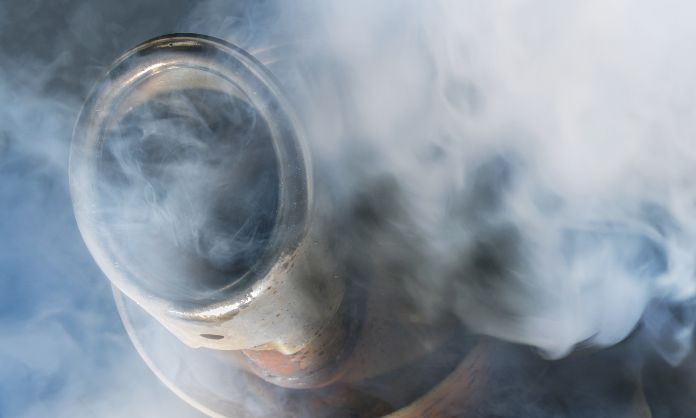
Leaking exhaust systems are an eyesore and a cause for concern—especially if you commute to work. Most individuals would rather not draw attention to themselves on every street they drive down, so fixing an exhaust leak is important for more than just aesthetic reasons.
This widespread condition is dangerous to your health and may lead to expensive repairs for your vehicle. Learning how to perform a diesel exhaust leak test at home will help you find the source before permanent damage occurs.
Exhaust Leaks Could Lead to Health Problems
The first reason why exhaust leaks are bad news is your health. A funky odor is one of the warning signs that there is a leak in your exhaust system. This smell implies dangerous gases are entering the cabin. Most passenger cars are not completely airtight; instead, they rely on the exhaust system to vent hazardous fumes out of the back. Carbon monoxide is a quiet killer and one of the most lethal combustion byproducts. A dangerous amount of toxic gas may escape your vehicle without your knowledge.
Potential for Costly Repairs
Secondly, an exhaust leak in some locations might cause costly internal engine damage. The exhaust system does more than merely carry dangerous compounds as it moves fumes away from the engine. The exhaust stream also removes heat from the engine combustion chambers.
A lack of adequate heat removal from the engine results from an exhaust leak near the exhaust manifold. Exhaust valves are vulnerable to overheating while the engine is running. Fixing the leak is usually far less expensive than replacing the engine, but repairing the interior damage might cost several thousand dollars.
The Home Tests
Before taking your vehicle in and paying an astronomical amount for “parts and labor,” you can get out a trusted shop vac to do some testing. Sticking things up in the exhaust pipe—specifically bananas—is strongly discouraged, but you can break the cardinal rule in this instance.
You will need a shop vac, duct tape, sudsy water, a spray bottle, and a towel to perform this simple test. You’ll want to reverse your shop vac over, making it blow outwards rather than suck things in. It’s wise to let it run for a few minutes to ensure there won’t be any dust particles in the exhaust.
Once everything is clear, wrap a small towel around the end of the tube and stick it to the tailpipe. Stuffing the towel around it helps make a seal, allowing you to seal off any outside air when you duct tape it in place, although a small gap may be necessary to keep the shop vac from overheating. Open your hood and take off the fender wall wells, and then you can turn on the vac.
You can also play doctor and build a makeshift stethoscope to try and hear any leaks. As you move your tubular funnel scope, you might pick up on a slight hissing sound. If you find it, put your fingertip over it to see if the hissing stops. No hissing implies you found the leak.
Knowing how to solve a diesel exhaust leak at home verifies that your poor gas mileage, foul smell, and noisy vehicle are due to a small hole in the pipe. The next step in the process is choosing the best method for fixing it.







